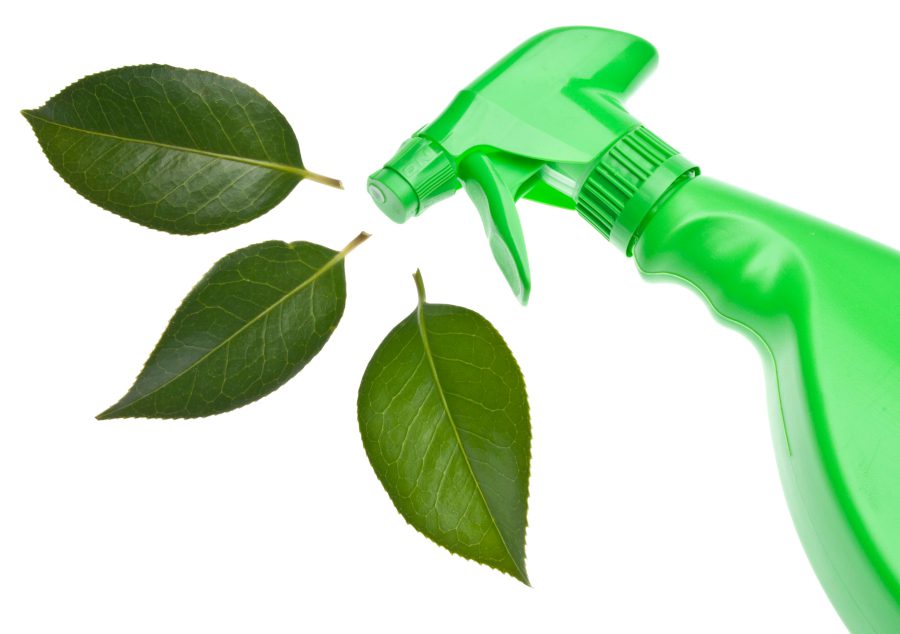

Green cleaning techniques represent a transformative approach to maintaining workplace health and safety, prioritizing the use of eco-friendly cleaning products and methods. These techniques aim to reduce the exposure to harsh chemicals, lower the risk of allergies and respiratory issues, and improve indoor air quality, all while minimizing environmental pollutants. By integrating green cleaning practices, businesses not only safeguard the health of their employees but also embrace a commitment to sustainability. This comprehensive guide explores the fundamentals of green cleaning, underscoring its critical role in modern workplaces, practical steps for implementation, the myriad benefits it offers, the challenges it poses, and effective strategies to overcome these obstacles. Through a strategic shift towards green cleaning, organizations can achieve a cleaner, healthier work environment and a significantly reduced ecological footprint, marking a win-win for both employee well-being and environmental stewardship.
What are green cleaning techniques?
Green cleaning techniques embody the practice of using cleaning methods and products that prioritize environmentally friendly ingredients. These methods are specifically chosen to safeguard human health while simultaneously protecting the environmental quality. Central to green cleaning is the avoidance of toxic and hazardous substances, favoring instead solutions that have a minimal environmental footprint. Products that are biodegradable, low in volatile organic compounds (VOCs), and derived from sustainable materials stand at the forefront of this approach.
Moreover, green cleaning encompasses not just the selection of safer products but also the adoption of efficient practices. This includes the use of microfiber cloths over disposable alternatives, the operation of cleaning equipment that optimizes water and energy use, and procedures that aim to reduce waste generation. At its core, green cleaning takes a holistic approach, striving not only for cleanliness but also for environmental harmony and safety for building occupants.
Why are green cleaning techniques important?
Green cleaning techniques stand as a cornerstone for promoting workplace health, safety, and environmental sustainability. They are crucial for a multitude of reasons, each contributing to a healthier, safer, and more sustainable living and working environment. At the forefront, these techniques significantly reduce chemical exposure, diminishing the health hazards linked with traditional cleaning agents. This is vital for lowering the risk of allergies and respiratory issues among employees, thereby enhancing the overall work environment.
Moreover, green cleaning plays a key role in improving indoor air quality. By ensuring that workplaces are free from harmful pollutants and airborne toxins, these practices safeguard the health of building occupants. Beyond the immediate benefits to human health, green cleaning also extends its impact to environmental protection. It aids in minimizing pollutants and airborne toxins, crucial steps towards preserving our planet’s ecosystems.
Emphasizing sustainability, green cleaning promotes the use of renewable resources and lessens the reliance on detrimental substances. Additionally, these methods are instrumental in reducing water and air pollution, demonstrating a commitment to the well-being of the broader community and the environment.
In summary, the importance of green cleaning transcends the boundaries of individual workplaces, aligning with broader objectives of public health, environmental stewardship, and sustainability. Through the adoption of green practices, businesses not only contribute to a healthier workplace but also endorse a more sustainable and environmentally conscious world.
Reducing chemical exposure
Green cleaning significantly reduces the reliance on harsh chemicals in workplaces. Opting for eco-friendly products decreases harmful substances, safeguarding the health of both employees and clients.
Lowering risk of allergies and respiratory issues
The shift towards green cleaning practices is pivotal in decreasing allergies and respiratory problems among building occupants, achieved by minimizing the use of allergenic and irritant substances found in traditional cleaning agents.
Improving indoor air quality
By eliminating the use of volatile organic compounds (VOCs) and other air-polluting chemicals, green cleaning enhances indoor air quality, leading to improved overall health and well-being for building inhabitants.
Minimizing pollutants and airborne toxins
Utilizing environmentally friendly cleaning products and methods, green cleaning aids in reducing the emission of pollutants and airborne toxins, benefiting both the indoor and outdoor environment.
Supporting sustainability
Green cleaning endorses sustainability by utilizing biodegradable products, sourcing from renewable resources, and employing recyclable packaging, thereby reducing the ecological footprint of cleaning activities.
Reducing water and air pollution
Eco-friendly cleaning methods and products play a crucial role in reducing water and air pollution. By avoiding chemicals that can contaminate waterways and contribute to air pollution, green cleaning practices protect our planet’s vital resources.
How to implement green cleaning in workplaces?
Implementing green cleaning in the workplace starts with choosing eco-friendly cleaning products. These products should be both effective and have a minimal impact on the environment. It’s critical to select items that boast environmental certifications, ensuring their credibility as truly green products.
Businesses must adopt green cleaning policies that clearly define the use of sustainable practices and products. Creating a green procurement policy is another vital step, guaranteeing that all cleaning supplies purchased adhere to environmental standards.
Training staff on green practices is essential for the successful adoption of green cleaning. This ensures everyone is on the same page regarding the importance and execution of these practices. Organizing regular training sessions helps keep staff informed about the latest in green cleaning techniques and products, reinforcing a commitment to a healthier and more sustainable workplace environment. Through these deliberate actions, businesses can make a significant contribution to environmental conservation and promote a safer, healthier work atmosphere.
Choosing eco-friendly cleaning products
Selecting eco-friendly cleaning products marks the initial stride towards embracing green cleaning. Opt for products that not only clean effectively but also exhibit a minimal environmental footprint, ensuring the workplace remains a safe environment.
Selecting products with environmental certifications
Prioritize choosing cleaning supplies that boast environmental certifications. These certifications serve as a testament to the products’ sustainability and safety, offering peace of mind that your choices align with green standards.
Adopting green cleaning policies
Adopting green cleaning policies formalizes an organization’s dedication to sustainable practices. Such policies lay down guidelines for product selection and the application of eco-friendly cleaning methods, ensuring a consistent approach across the board.
Creating a green procurement policy
The creation of a green procurement policy is pivotal in ensuring all cleaning supplies purchased adhere to stringent environmental standards. This policy underscores the commitment to sustainability, emphasizing the importance of selecting eco-friendly products.
Training staff on green practices
Training staff on green practices is indispensable for the successful implementation of green cleaning. Educating employees on the advantages and methodologies of green cleaning ensures these practices are carried out effectively and with full understanding.
Organizing regular training sessions
Organizing regular training sessions plays a crucial role in keeping staff updated on the latest developments in green cleaning techniques and products. Continuous learning fosters a culture of sustainability and encourages ongoing compliance with green practices.
Benefits of green cleaning in the workplace
Green cleaning in the workplace offers a plethora of benefits, significantly enhancing employee health and well-being. By reducing exposure to harsh chemicals, it directly contributes to a decrease in health-related absences, boosting overall productivity. This healthier work environment naturally leads to decreased absenteeism, further increasing productivity as employees are less likely to fall ill.
From an environmental standpoint, green cleaning practices ensure a lower environmental impact, actively supporting a healthier ecosystem. This approach not only aids in reducing healthcare expenses—thanks to fewer health issues among staff—but also results in cost savings in the long term regarding cleaning supplies. Opting for green cleaning demonstrates a business’s commitment to sustainability, fostering a positive image while contributing to a healthier planet.
Enhanced employee health
Enhanced employee health emerges as a key benefit of green cleaning, with reduced exposure to harmful chemicals leading to fewer health issues and fostering a more vibrant and productive workplace environment.
Decreasing absenteeism and increasing productivity
By fostering a healthier work setting, green cleaning significantly contributes to decreasing absenteeism and increasing productivity. A reduction in illness-related absences naturally enhances overall work performance and efficiency.
Lower environmental impact
The adoption of green cleaning practices plays a pivotal role in lowering the environmental impact associated with workplace maintenance. It minimizes the emission of harmful substances, promoting a more sustainable approach to business operations.
Contributing to a healthier ecosystem
Green cleaning is instrumental in contributing to a healthier ecosystem. By minimizing the reliance on toxic chemicals, it helps in preserving wildlife and maintaining the balance of natural habitats, ensuring a healthier planet for future generations.
Cost savings in the long term
Implementing green cleaning not only benefits the environment and employee health but also leads to cost savings in the long term. More concentrated and efficient products mean less frequent purchases and a reduction in the overall cost of cleaning supplies.
Reducing expenses on healthcare and cleaning supplies
A healthier workforce, courtesy of green cleaning, significantly aids in reducing expenses on healthcare and cleaning supplies. Lower healthcare costs due to improved employee health, combined with the efficient use of eco-friendly products, contribute to overall cost savings for the business.
Challenges in implementing green cleaning
While transitioning to green cleaning practices offers numerous benefits, it also comes with its own set of challenges. Initial costs often pose a significant barrier, as investing in eco-friendly products and training may entail upfront expenses that can deter businesses. Another obstacle is resistance to change, where skepticism and ingrained habits among staff can impede the adoption of green practices.
Moreover, finding effective green products presents a challenge, especially in a market flooded with options and potentially misleading eco-labels. Navigating these challenges requires a strategic approach, encompassing careful planning, education, and a commitment to selecting certified green products. Overcoming these hurdles is essential for ensuring the successful and sustainable implementation of green cleaning practices in the workplace.
Initial costs
Initial costs represent a significant hurdle in the shift towards green cleaning. This challenge encompasses the need for an upfront financial investment to procure eco-friendly products and resources.
Investing in green products and training
A key step in embracing green cleaning is investing in green products and training. This ensures that the workforce is not only equipped with sustainable supplies but also understands the importance and application of green cleaning practices.
Resistance to change
The resistance to change can often impede the adoption of green cleaning methodologies. Employees may be hesitant to depart from traditional cleaning methods they are accustomed to, presenting a barrier to change.
Overcoming skepticism and habits
Addressing skepticism and habits is crucial for the successful implementation of green cleaning. Through education and demonstrating the effectiveness and benefits of green products, it’s possible to shift mindsets and encourage the adoption of new practices.
Finding effective green products
The challenge of finding effective green products involves discerning which products are truly eco-friendly while also meeting the cleaning needs of the workplace, requiring thorough research and selection.
Navigating misleading eco-labels
Navigating misleading eco-labels is a notable challenge, as the market is saturated with products claiming to be green. Identifying products that are genuinely eco-friendly necessitates looking for reputable and recognized environmental certifications.
Overcoming challenges in green cleaning
Navigating the hurdles of implementing green cleaning practices demands a comprehensive strategy. Seeking certifications and guidance from esteemed environmental organizations can lay a strong foundation, ensuring both the authenticity and effectiveness of green products. Leveraging resources from these entities can also illuminate best practices and successful implementation strategies.
Crucial to this journey is engaging employees in the transition. By incentivizing and educating staff, organizations can cultivate a culture of sustainability, encouraging a collective move towards green practices. Regularly evaluating and adjusting practices ensures that the approach to green cleaning remains relevant and effective, in line with the latest standards and innovations.
Conducting regular reviews and feedback sessions allows for continuous refinement of green cleaning strategies, addressing any emerging issues and optimizing the process for maximum impact. Through these deliberate actions, businesses can successfully overcome the challenges of green cleaning, reaping its benefits for both the environment and workplace well-being.
Seeking certifications and guidance
Seeking certifications and guidance from established environmental organizations is pivotal, as it validates the credibility and effectiveness of green cleaning products and practices. This step lays a solid foundation for a sustainable cleaning regimen.
Utilizing resources from environmental organizations
Leveraging resources from environmental organizations offers a wealth of knowledge on best practices and successful strategies for green cleaning, providing a clear path for effective implementation and ongoing enhancements.
Engaging employees in the transition
The role of engaging employees in the transition towards green cleaning cannot be overstated. Active participation and support from the staff are crucial for embedding a culture of sustainability and ensuring the smooth adoption of eco-friendly practices.
Incentivizing and educating staff
Incentivizing and educating staff on the importance and methodologies of green cleaning can drive motivation and commitment, empowering employees to actively contribute to and support green initiatives within the workplace.
Evaluating and adjusting practices
Regularly evaluating and adjusting practices ensures that green cleaning approaches stay current and effective, facilitating continuous improvement and adaptation to evolving sustainability standards.
Conducting regular reviews and feedback sessions
Conducting regular reviews and feedback sessions enables open dialogue and collaboration among staff, highlighting areas for improvement and celebrating successes in green cleaning efforts, thereby promoting an environment of continuous learning and progress.



